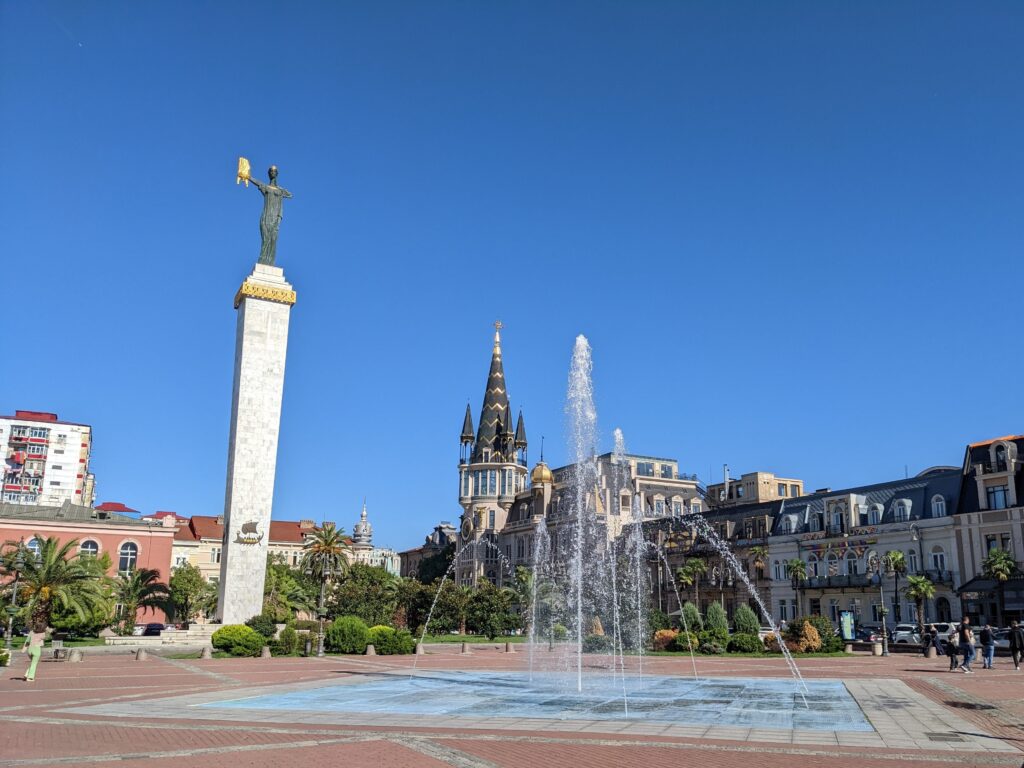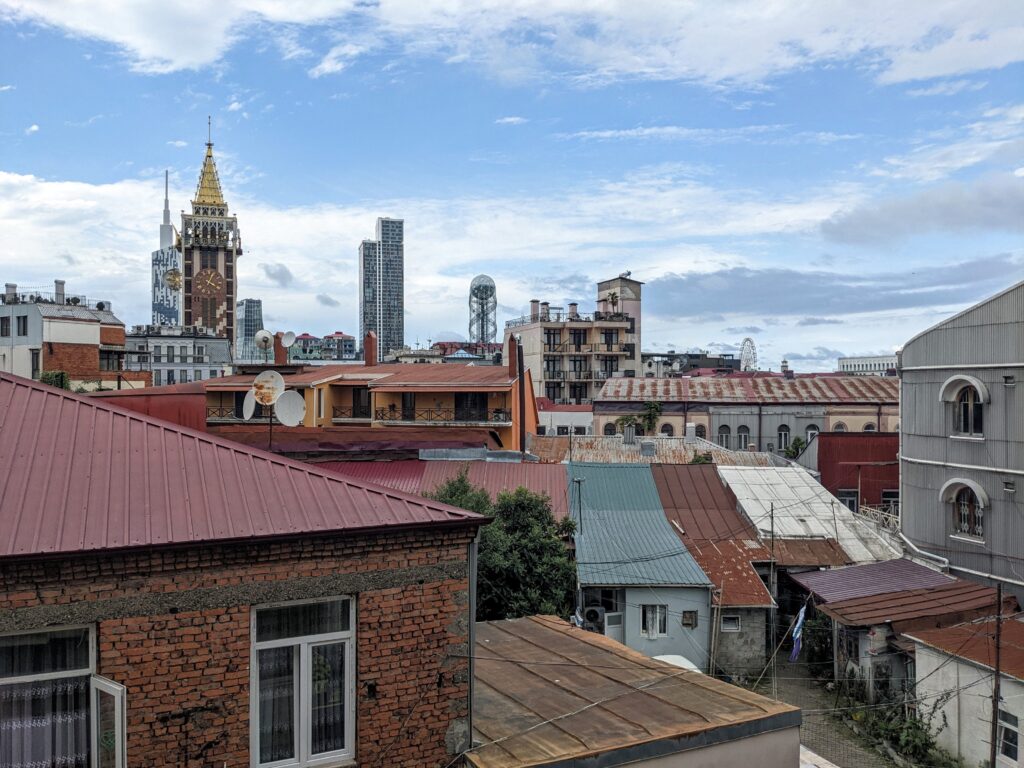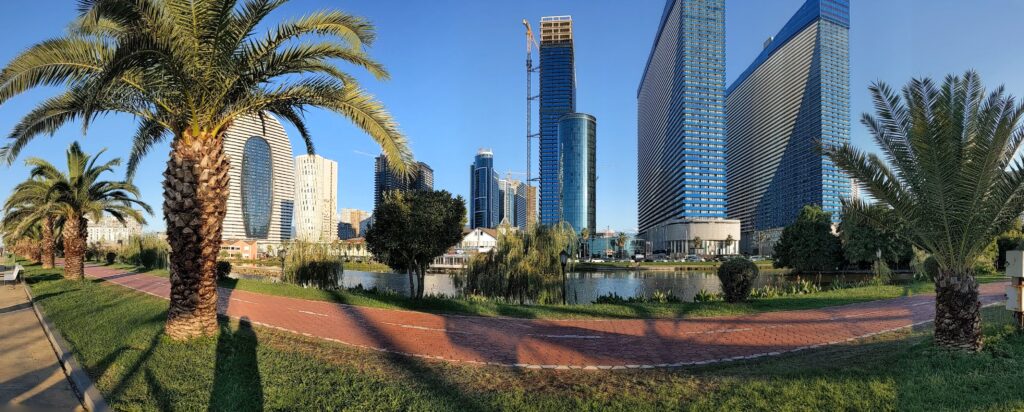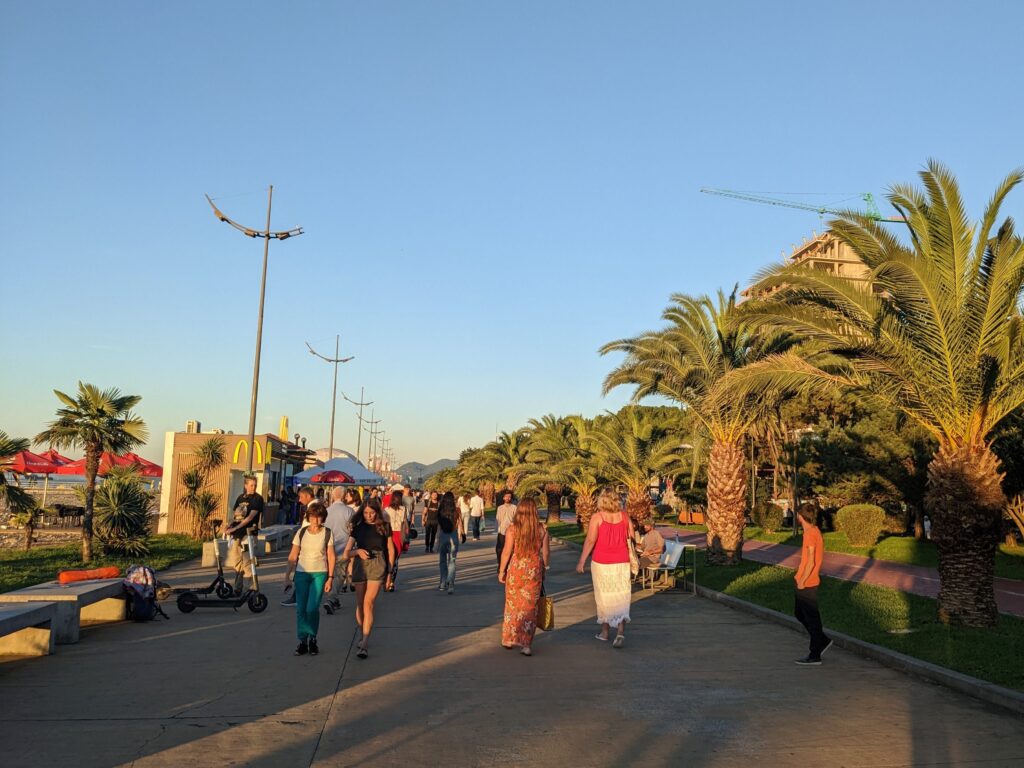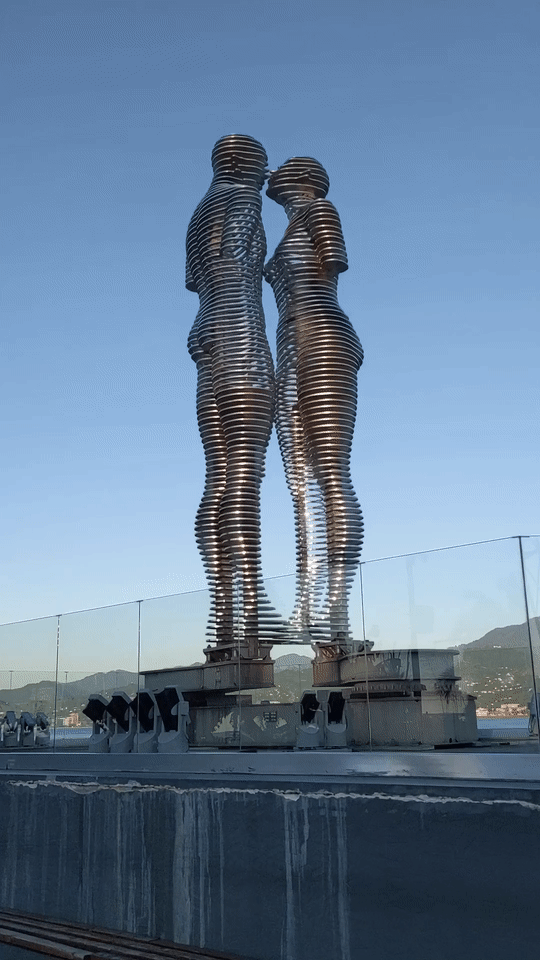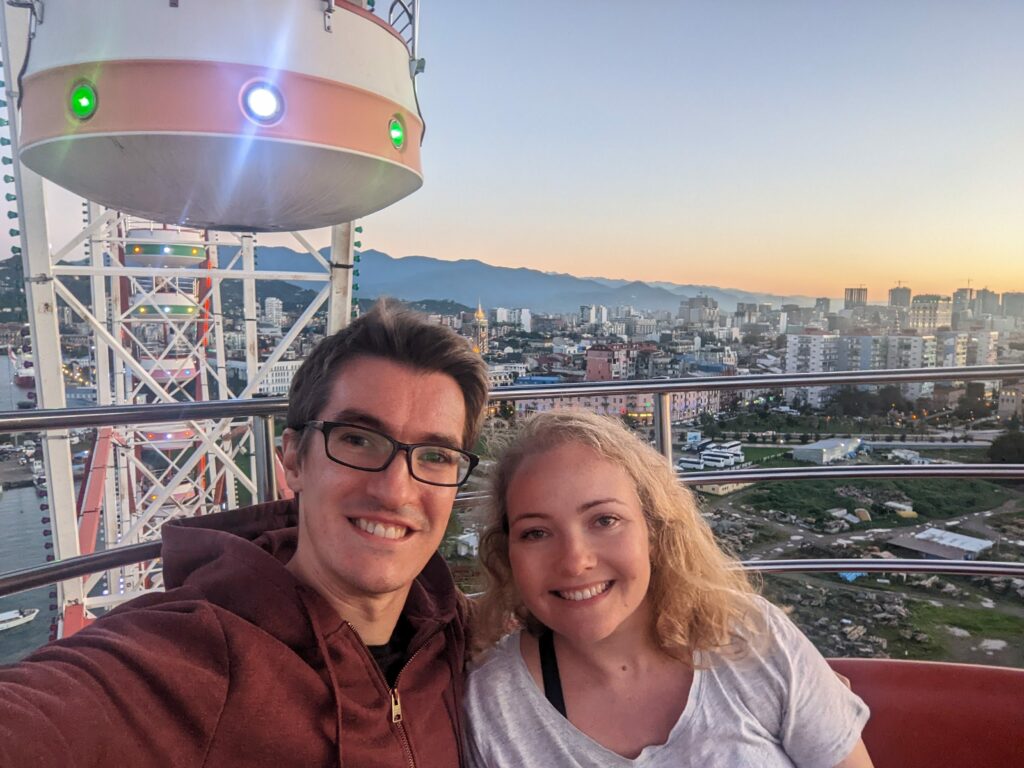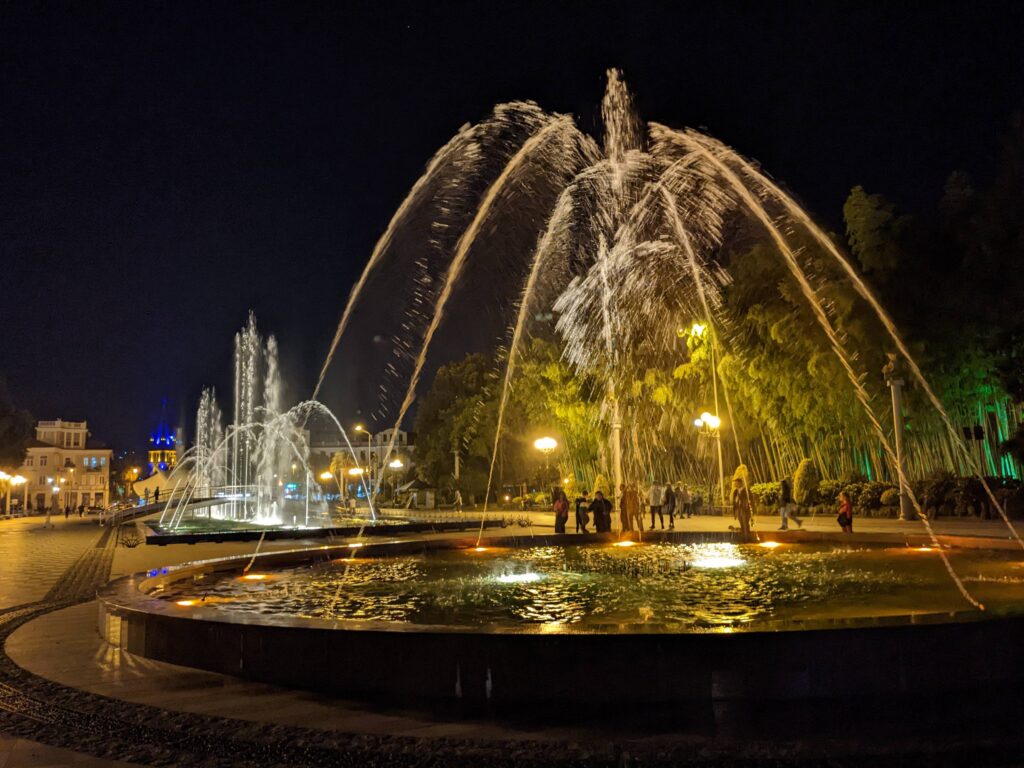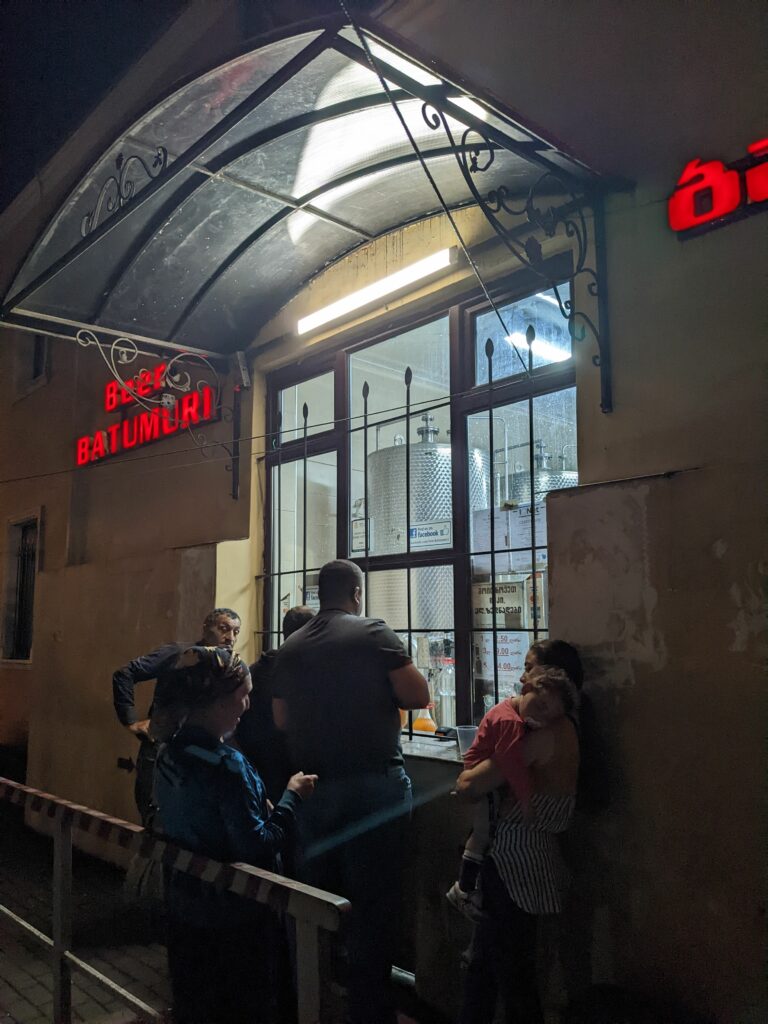Svaneti is a mountainous region in northern Georgia, famous for its natural beauty, defensive towers, and distinct culture and language. Putting these three together make Svan towns popular destinations in themselves, as well as a great base for hiking in the summer and skiing in the winter. Svaneti had its first snowfall of the year while we were sheltering from the rain in Batumi, which meant the surrounding mountains were already topped with perfectly white crowns, glistening in the autumn sun. We had two full days in Svaneti, both of which we spent exploring the mountains on foot.
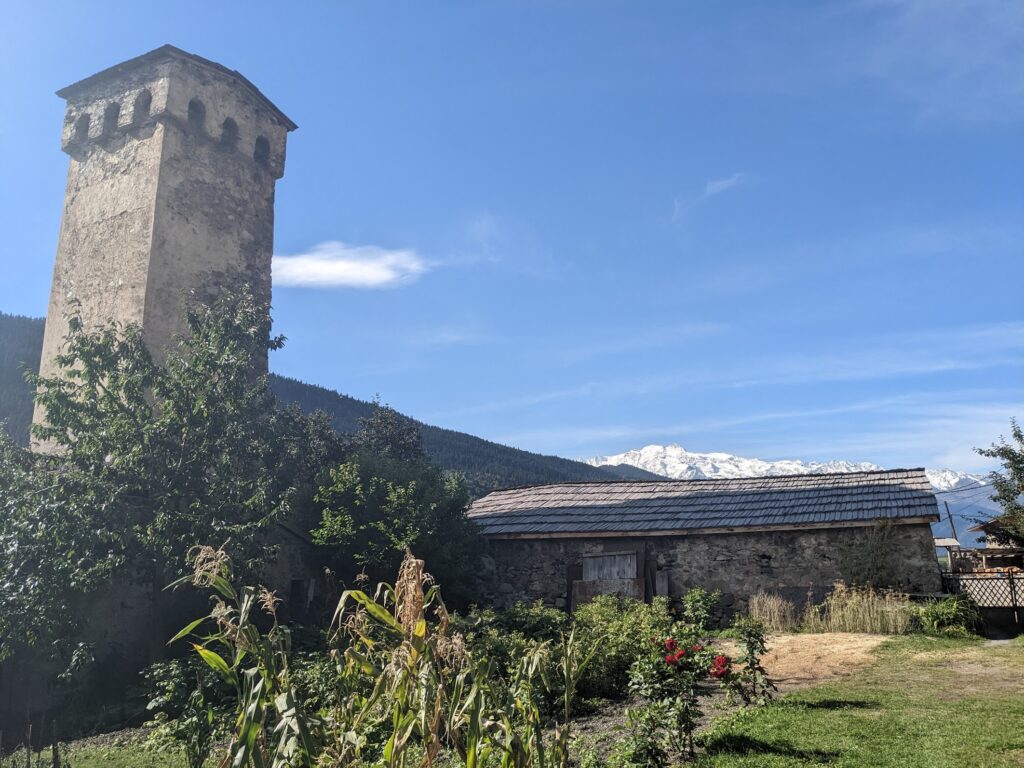
Our route to Mestia (the main town in Upper Svaneti) started with a 1 hour pre-breakfast walk through Batumi, accompanied for most of the route by a dog friend that we picked up on the way. At first we were more than a little apprehensive, but he was happy to trot a good distance beside us for company and on the off-chance of a bit of food.
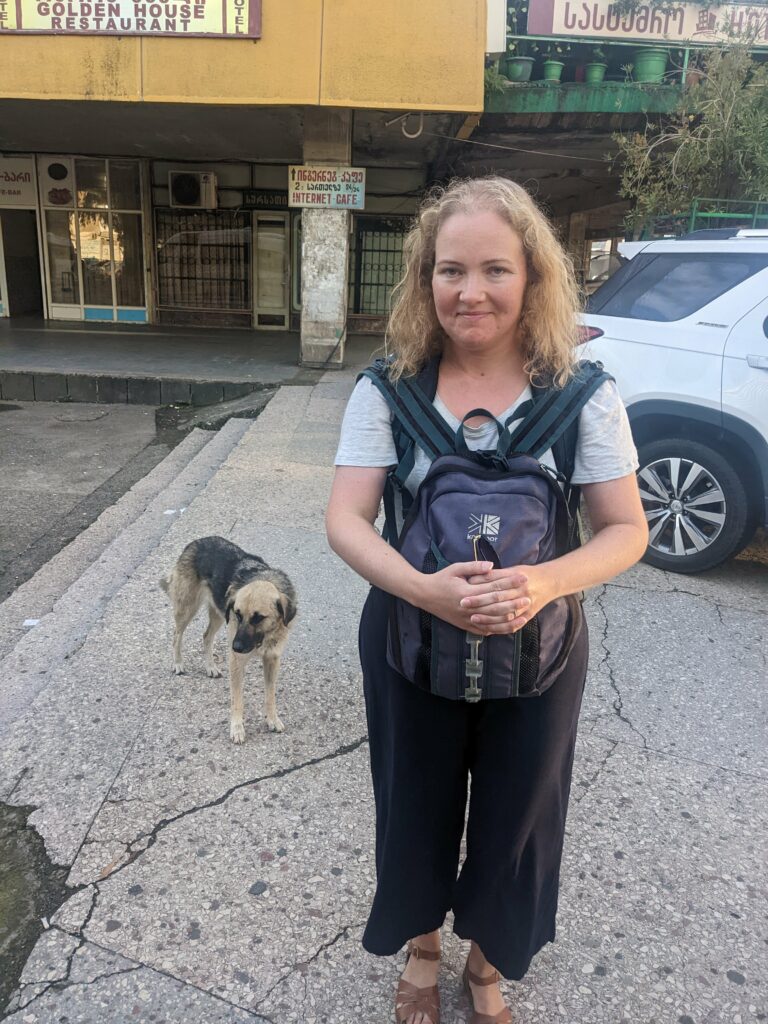
From Batumi’s bus station, it took about six and a half hours split across two marshruktas before we finally arrived in Mestia. We passed some absolutely epic scenery on the road through the mountains, with Sara opting to sleep rather than look out of the window of our slightly-faster-than-comfortable ride.
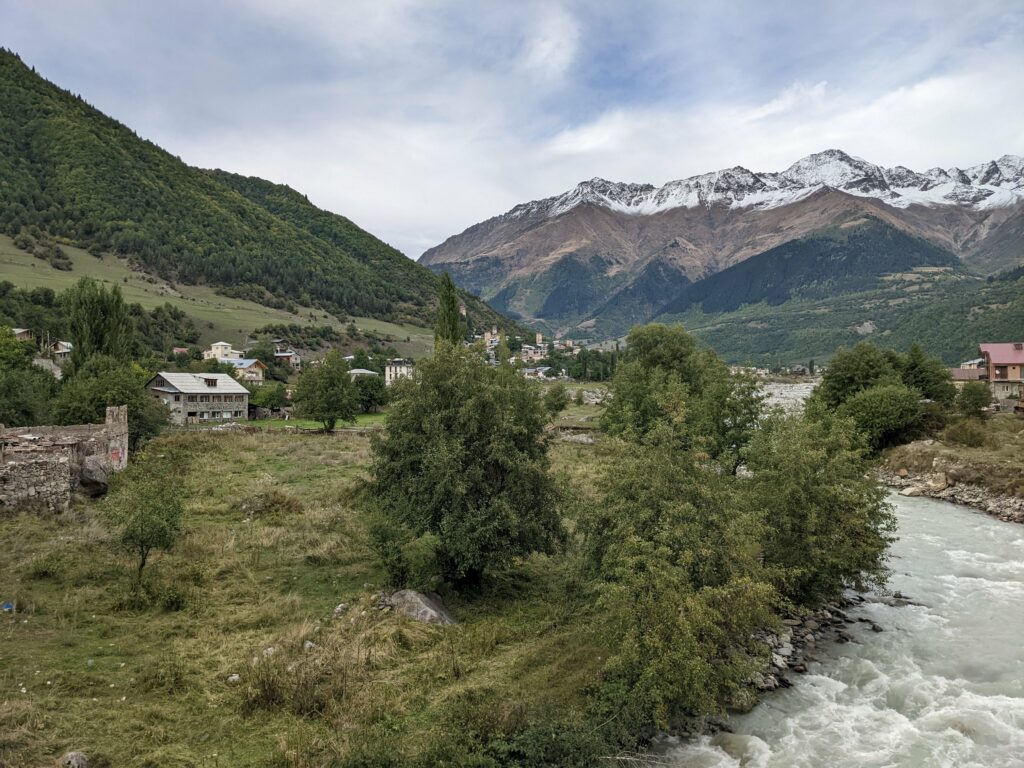
Day 1: Hike to the Cross Over Mestia
We woke the next morning to clear skies and views of snowy peaks from our guesthouse window.
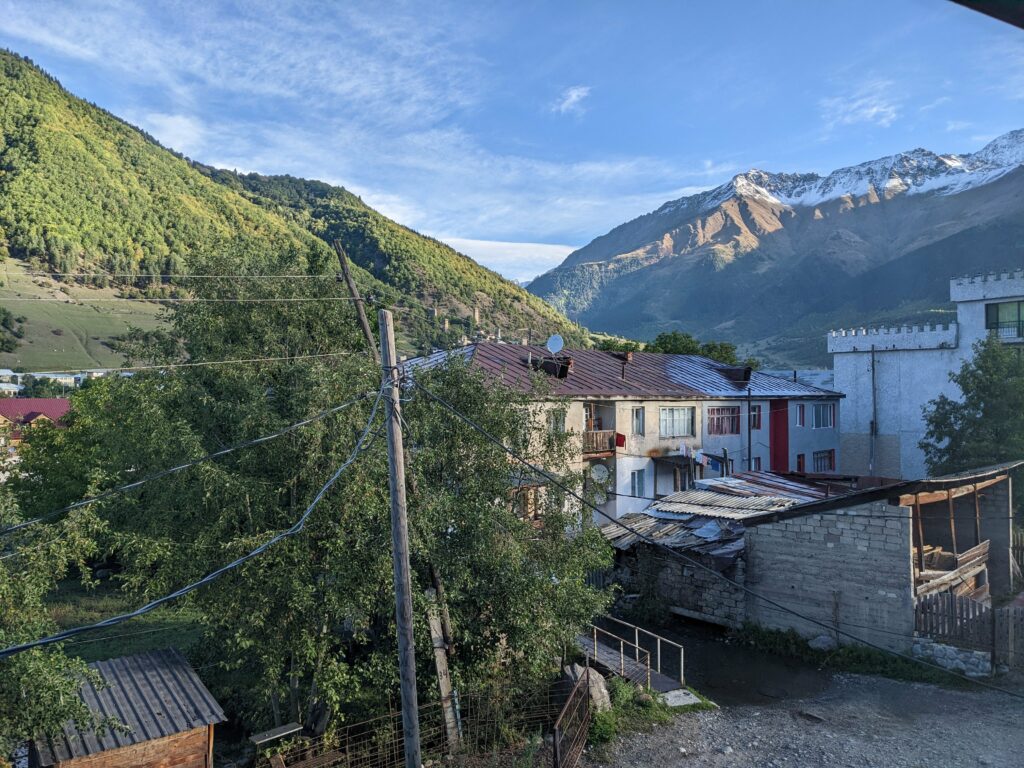
For our first day hike, we chose to walk up to The Cross Above Mestia, which is basically a viewpoint on top of the nearest mountain. Although only 5.5 km in horizontal distance, this hike also involved 800m of elevation gain. The cobbled road rose steeply out of the town, gradually turning into a dirt track, before meeting a rocky footpath that snaked up the mountain through the trees. With a climb so steep, there were plenty of opportunities for us to pretend to take in the views while catching our breath.
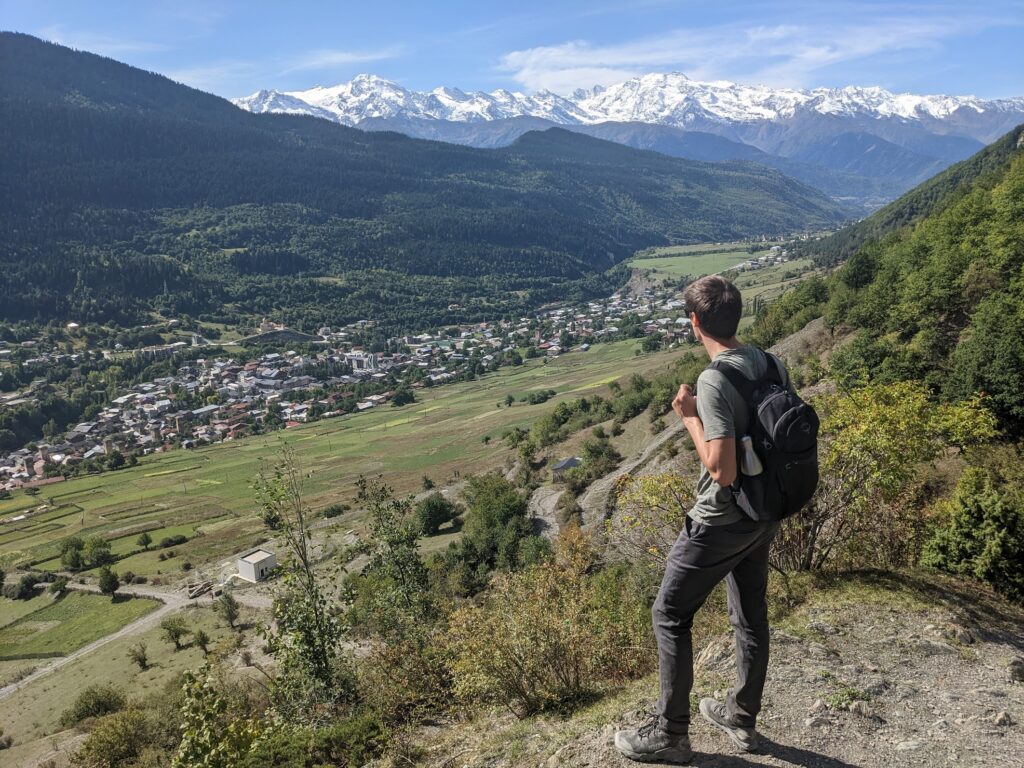
While the climb itself was pretty hot in the morning sun, as we approached the summit we were met with a very welcome cool breeze. Next to the cross was a covered wooden platform reached by a ladder that provided the perfect spot to enjoy our lunch of chocolate spread sandwiches and oranges (a truly inspired pairing).

As we got up to leave, one of the resident platform dogs also stood up and stretched, before taking the lead on our descent down the mountain. He’d happily trot on ahead, then just as we thought he’d left us, he’d be waiting around the next turn. He was a very affable chap, and we named him Timmy. The three of us stopped at a viewpoint near the bottom of the mountain allowing another group of hikers to catch up with us. They remarked how cute our dog was, and I replied how he’d been a loyal friend, at which point he deserted us and followed the other group down to the village.
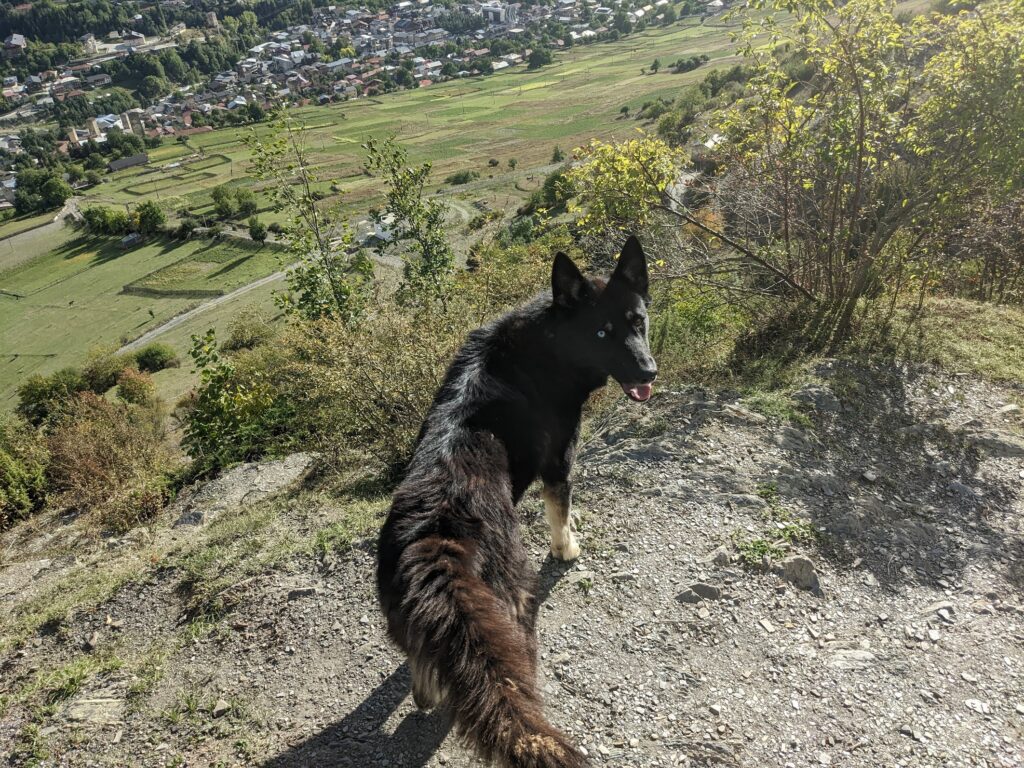
Day 2: Zhamushi to Mestia
The following day we took a taxi to Zhamushi with the plan to walk the first stretch of the famous 4 day path from Mestia to Ushguli (but in reverse). However, not only did our taxi driver not fancy driving up the dirt road to Zhamushi (somewhat understandably, we realised later when we walked it), he also claimed not to have any change when we tried to pay. We both checked our wallets thoroughly which didn’t resolve anything, and proceeded to sit there for a few minutes at a bit of an impasse. The taxi driver even piled on some further pressure by flagging down a passing car under the pretence of helping to make change. It was only when I insisted on walking up the (unbeknownst to me quite steep) hill to Zhamushi to split our note, that our driver finally remembered that he did have change after all. You’ve gotta respect the theatre involved in his negotiation though – we were there a good 10 minutes.
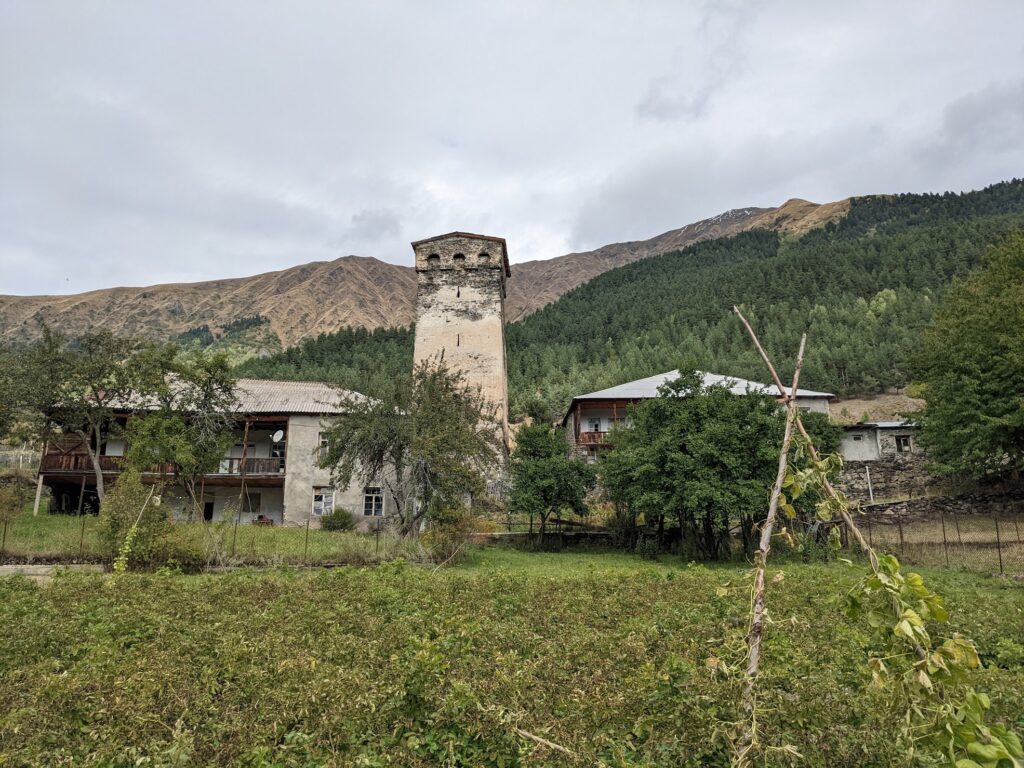
With the correct fare paid, we began the bonus 200m of ascent that I’d hoped to avoid via our taxi ride, and put the whole affair behind us. The rest of our planned hike was quite different to the first day, with a steady 200m of ascent followed by a gradual 500m of descent into Mestia, all the while traversing a couple of mountains via a 9.5km path.
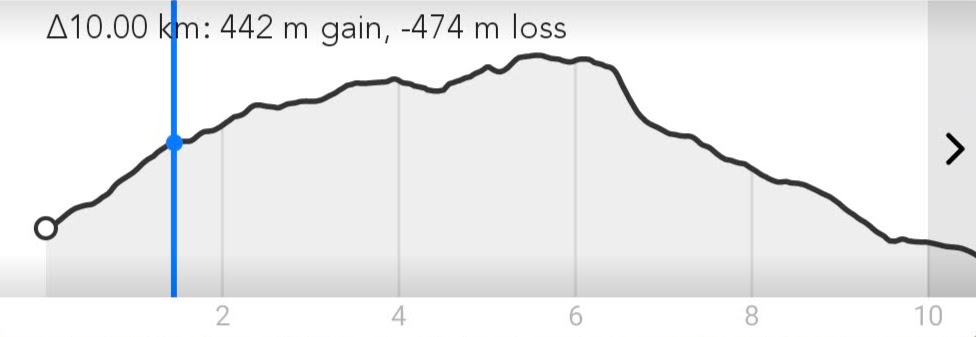
Blue line represents bonus elevation that our taxi didn’t want to drive.
We stopped for lunch at another dramatic viewpoint for round two of our chocolate-orange extravaganza. It felt like we had the whole valley to ourselves, until another couple of hikers turned up, along with the obligatory stray dog who had decided they were now friends for life. He was very happy to pose in return for little of our lunch.


Svan cuisine
While it’s not like us to return to the same restaurant, we ended up eating at Cafe Laila two nights running, and at no point did it disappoint.
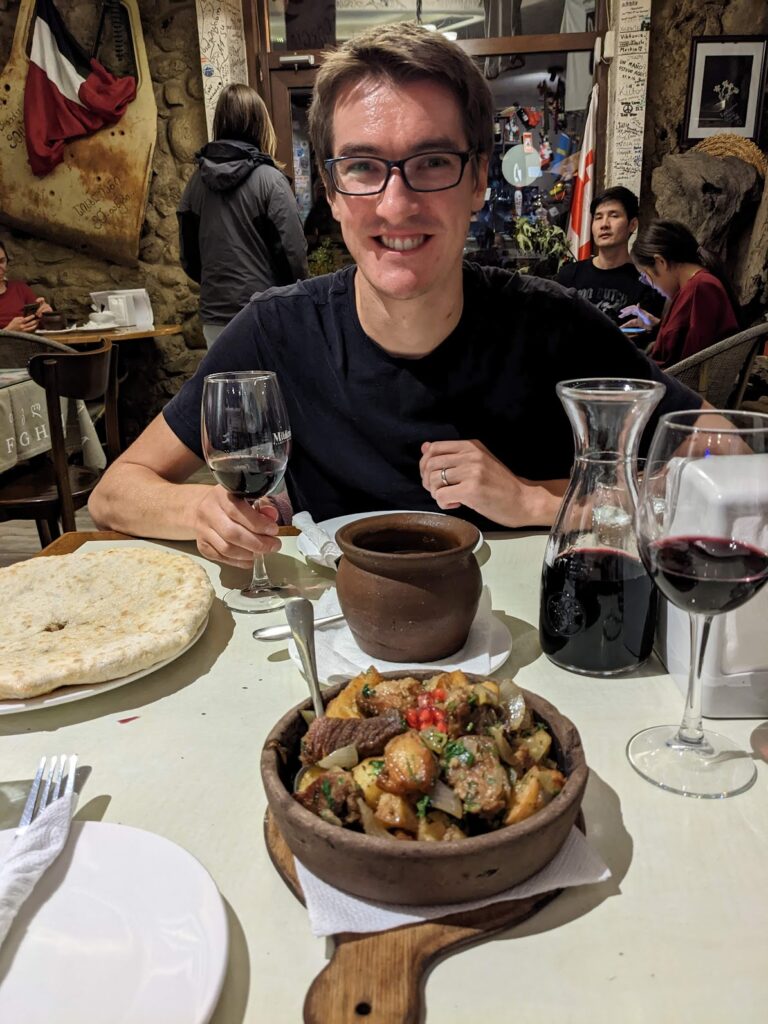
The star of the show was the Kubdari – Svaneti’s national dish (on the left of the above photo). The large circular flatbread consisted of two layers of soft dough wrapped around small chunks of intensely seasoned steak, herbs and onion. The flavour definitely reminded us of something, but neither of us could put our finger on exactly what. Either way, it was totally delicious.
Next up was Ojakuri – a typical dish shared during a family meal (in the foreground of the photo). This was made up of pork, potatoes, onion, a generous amount of garlic and white wine, topped with pomegranite seeds, which Sara elegantly described as “the perfect symphony of flavour” (although she was well into the homemade wine by this point).
Finally, the pot in the middle of the photo was Lobio Kotanshi – a salty bean and coriander stew. While this dish didn’t change our life, it complemented the other headliners very nicely indeed.
Mestia (and Svaneti) certainly grew on us throughout our stay. While Mestia is far from easily accessible, the rewards for the journey more than justify the effort. I’m really glad we’ve been able to explore this part of Georgia so far from its capital city.
Our next stop will be Kutaisi – Georgia’s third largest city, and one of the oldest continuously inhabited sites in Europe.
